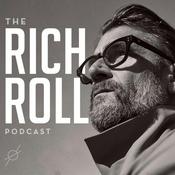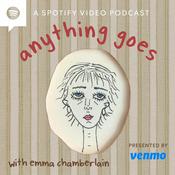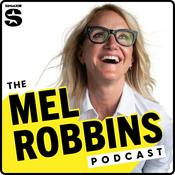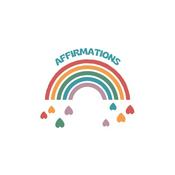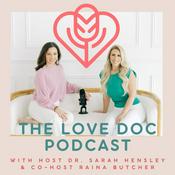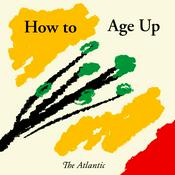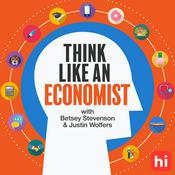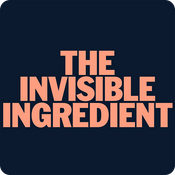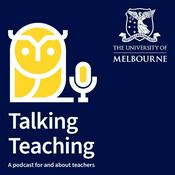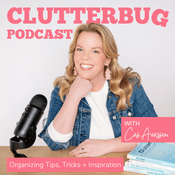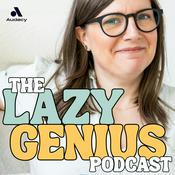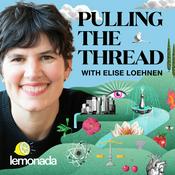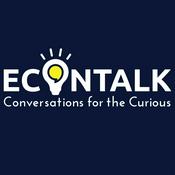Available Episodes
5 of 140
- 130. What Emotionally Available Partners Actually DoSend Gemma a messageWe hear the term “emotionally unavailable” all the time, yet many women are not sure what the opposite actually looks like in real life. In this episode, Gemma breaks down emotional availability in clear, practical terms, so you can recognise it early, feel safer in your body and stop settling for relationships that leave you guessing.Gemma also explores how schemas like Emotional Deprivation and Abandonment shape what feels “normal” in love, why emotionally safe partners can feel boring or suspicious at first, and how you can slowly retrain your nervous system to relax into healthy connection.In this episode, you will learn:What the Emotional Deprivation schema isHow it forms in childhoodWhy it makes it hard to identify and express your needsWhy you can consciously want an emotionally available partner yet keep feeling pulled toward distance, inconsistency, or intensityHow schemas and your unconscious “love template” drive partner choice and keep you in familiar but unfulfilling patternsTen signs of an emotionally available partner, including someone who:Takes an active interest in you, asks thoughtful questions, remembers details, and wants to know your inner worldHas actions that match their words, shows up consistently, and follows throughIs emotionally responsive, listens when you are vulnerable, validates your feelings, and attempts repair after conflictIs predictable rather than chaotic, so your nervous system can settle instead of living on high alertIs willing to talk about the relationship and co create something with you instead of avoiding emotional conversationsHas emotional self awareness, can name their feelings, take responsibility, and does not shame you for having emotionsShows care through steady, thoughtful actions that leave you feeling valued and appreciatedAllows closeness without pulling away or going hot and cold after intimacyMakes room for your needs and respects your boundaries, instead of calling you “too needy” when you ask for contact or reassuranceIs kind in a felt way - gentle with your vulnerabilities, respectful in conflict, and emotionally generousWhy emotional availability can feel “boring” or even suspicious if you grew up with chaos, distance, or inconsistencyA real life example from a Love Wisely client who noticed her physical tension drop when she finally dated someone emotionally availableHow to start looking at your own relationship history through the lens of schemas and emotional availability so you can choose differently next timeGemma finishes with an invitation to refSupport the show🎁 Download Free Guide: Dating With Insight 🩷 Love Wisely Priority list for Early March 2026 💛 Access Elevate You Worth: Self-Worth Healing Bundle Connect with Me 📷 Instagram: @drgemmagladstone 📧 Email: [email protected] for 1:1 coaching enquiries 🌐 Website: drgemmagladstone.com 🚩 The Red Flag Project - your ultimate guide to red flags! Get Instant Access 🌻 Support the PodcastLove the show? Help us keep going with a monthly contribution: Support here--------43:56
- 129: The Real Dating Mindset: 10 Shifts That Protect You From Old PatternsSend Gemma a messageDating can stir up every schema you have. If you have a history of emotionally unavailable partners, narcissistic relationships or spending years in situationships that never really went anywhere, getting back out there can feel both hopeful and terrifying.In this episode I walk you through ten grounded mindset shifts that help you stay in Healthy Adult mode while you date so you can notice red flags, take in green flags and stop abandoning yourself in the process.I talk about:Why dating is dataHow to shift the goal from “finding the one” to “showing up grounded and observant”How to stay open to experience and still be discerningWhat it means to embrace ambiguity without losing yourself, especially if you have an abandonment schemaWhy you need to replace “stay positive” with “stay real” so you do not slide into the “super easygoing, no needs” people pleasing roleThe power of focusing on internal milestones, not external outcomesHow to normalise the emotional rollercoaster of dating when schemas and old attachment wounds get activatedWhat it looks like to cultivate self trust over outcome obsessionHow to reframe rejection as clarity, especially when ghosting or avoidant behaviour shows you who someone really isWhy breaking the pattern of fantasy thinking is essential if you tend to fall for potential rather than realityThe protective power of letting people reveal themselves over timeThis episode is for you if:You have a history of choosing emotionally unavailable or narcissistic partnersYou find it very hard to tolerate uncertainty in early datingYou often override your needs because you do not want to be “too much” or “difficult”You get attached quickly and then feel anxious, preoccupied and on edgeYou want a practical, compassionate framework for dating differently1:1 coachingIf you would like to explore working with me privately you can email me at [email protected] for details on my coaching packages.Support the show🎁 Download Free Guide: Dating With Insight 🩷 Love Wisely Priority list for Early March 2026 💛 Access Elevate You Worth: Self-Worth Healing Bundle Connect with Me 📷 Instagram: @drgemmagladstone 📧 Email: [email protected] for 1:1 coaching enquiries 🌐 Website: drgemmagladstone.com 🚩 The Red Flag Project - your ultimate guide to red flags! Get Instant Access 🌻 Support the PodcastLove the show? Help us keep going with a monthly contribution: Support here--------55:53
- 128. The Sorry Reflex - Why You Apologise (When You Don’t Need To)Send Gemma a messageIn this episode, Gemma unpacks The Sorry Reflex - the automatic urge to apologise, even when we’ve done nothing wrong. Rooted in the subjugation schema, this coping behaviour often begins in childhood, where expressing needs or disagreeing felt unsafe. When our nervous system equates disapproval with danger, “sorry” becomes a way to stay safe and connected.Gemma explains how this pattern shows up in dating, relationships, and everyday interactions - especially for women conditioned to be accommodating. You’ll learn to identify your triggers (tone changes, sighs, silence), notice the body’s reaction, and experiment with opposite action to retrain your nervous system.You’ll also hear a real-life success story from one of Gemma’s Love Wisely group members, plus guidance on combining schema therapy and EMDR to heal the deeper beliefs beneath chronic apologising.If you’re tired of shrinking yourself, over-explaining or feeling guilty for taking up space, this episode will help you shift from “sorry” to self-trust.TakeawaysOver-apologising is a safety response, not good manners.Driven by subjugation, approval-seeking, and self-sacrifice schemas.Triggers: subtle signs of disapproval—tone, delay, sigh, silence.Body cues: chest tightness, racing heart, hyper-empathy.Short-term relief, long-term self-erasure.Opposite action = growth and rewiring.You can disappoint someone and still be safe and loved.Support the show🎁 Download Free Guide: Dating With Insight 🩷 Love Wisely Priority list for Early March 2026 💛 Access Elevate You Worth: Self-Worth Healing Bundle Connect with Me 📷 Instagram: @drgemmagladstone 📧 Email: [email protected] for 1:1 coaching enquiries 🌐 Website: drgemmagladstone.com 🚩 The Red Flag Project - your ultimate guide to red flags! Get Instant Access 🌻 Support the PodcastLove the show? Help us keep going with a monthly contribution: Support here--------33:31
- 127. Can they change? Two Essential Qualities That Make It PossibleSend Gemma a messageIf you are asking can this improve, this episode gives you a simple lens. Gemma unpacks two essential capacities that predict whether change is possible in a relationship. You will hear why the brain repeats what is familiar, how schemas drive loops and how to assess real readiness for growth in yourself and in someone you are dating.In this episodeWhy patterns repeat even when you want something differentThe role of schemas in attraction, conflict and copingTwo essentials that predict changeWhy avoidance blocks growthDating as data, plus a new way to date with self awarenessAre you ready to join Love Wisely? Doors open again in Feb 26. Support the show🎁 Download Free Guide: Dating With Insight 🩷 Love Wisely Priority list for Early March 2026 💛 Access Elevate You Worth: Self-Worth Healing Bundle Connect with Me 📷 Instagram: @drgemmagladstone 📧 Email: [email protected] for 1:1 coaching enquiries 🌐 Website: drgemmagladstone.com 🚩 The Red Flag Project - your ultimate guide to red flags! Get Instant Access 🌻 Support the PodcastLove the show? Help us keep going with a monthly contribution: Support here--------41:42
- 126. Inside Limerence (Part 2): From fantasy to freedomSend Gemma a messageWhat limerence really is, why it hooks into our deepest unmet needs and how to gently unhook using a schema-therapy lens.In Part 2, Gemma explores limerence as a preoccupying, often intoxicating state that’s fueled by unmet needs - with abandonment and emotional deprivation schemas usually at the core. She explains why the brain’s reward systems (hello, dopamine) and a quieted prefrontal cortex can hijack rationality, making red flags easy to miss. You’ll learn practical, compassionate ways to reduce rumination, interrupt mental loops and begin reparenting the vulnerable parts that long for consistent care. Gemma also speaks to when limerence turns into a relationship (and why those tend to be high “schema chemistry”) and offers realistic hope for moving toward grounded, secure love.Key takeawaysLimerence = unmet needs + brain rewards. It’s human, common, and often temporary; shame isn’t helpful.Schemas under the hood: Abandonment (primary) and emotional deprivation are frequent drivers; attachment style can be a clue, but schemas give the nuance.“Schema chemistry” alert: Relationships born from intense limerence often trigger old wounds on both sides.Stop feeding the loop: Reduce cues (no social stalking, no photo scrolling). Notice → name → turn your mind.Circuit breakers that help: Mindfulness, imagery/rumination interruption, exercise, novelty/learning, supportive people, flow-state activities.Reparenting matters: Daily, gentle practices to meet needs consistently will dilute schemas over time.When to get help: If limerence becomes distressing, incapacitating or escalates into harmful behaviours, seek professional support.Practical steps you can tryName it: “This is the limerence loop.”Reduce reinforcement: Unfollow/mute; remove reminders.Shift attention: Choose a grounding task (walk, call a friend, learn something new).Reparenting micro-rituals: Daily check-ins with your vulnerable part; write a brief caring letter to yourself.Track triggers: Note what sparks rumination and plan alternatives.Therapeutic support: Look for schema-informed, experiential work.Mentioned in this episodeCoaching spaces now open with Gemma (limited).Love Wisely group coaching: next intake planned for late Feb '26 (waitlist in links).Reviews really help. Please rate on your podcast app.Contact: [email protected] the show🎁 Download Free Guide: Dating With Insight 🩷 Love Wisely Priority list for Early March 2026 💛 Access Elevate You Worth: Self-Worth Healing Bundle Connect with Me 📷 Instagram: @drgemmagladstone 📧 Email: [email protected] for 1:1 coaching enquiries 🌐 Website: drgemmagladstone.com 🚩 The Red Flag Project - your ultimate guide to red flags! Get Instant Access 🌻 Support the PodcastLove the show? Help us keep going with a monthly contribution: Support here--------34:40
More Education podcasts
Trending Education podcasts
About Healing For Love
Healing for Love A podcast for anyone who wants to stop shrinking, start healing, and grow into their most grounded, authentic self in love & life. Hosted by Dr Gemma Gladstone — relationship coach, former clinical psychologist (25+ years), and expert in schema healing — this podcast offers thoughtful, insight-rich episodes to help you understand your patterns, heal from past emotional wounds, and gently rewrite your relationship template.If you’ve ever felt stuck in familiar dynamics — seeking approval, fearing abandonment, dating narcissists or losing yourself in relationships — you’re not alone. Healing for Love is a space for self-reflection, emotional insight, and steady encouragement. Here, you’ll learn how to reconnect with your worth, trust your inner voice, and build relationships that support who you truly are.This is for the woman who’s ready to feel more secure, more whole, and more herself — in love and in life.
Podcast websiteListen to Healing For Love, The Rich Roll Podcast and many other podcasts from around the world with the radio.net app

Get the free radio.net app
- Stations and podcasts to bookmark
- Stream via Wi-Fi or Bluetooth
- Supports Carplay & Android Auto
- Many other app features
Get the free radio.net app
- Stations and podcasts to bookmark
- Stream via Wi-Fi or Bluetooth
- Supports Carplay & Android Auto
- Many other app features


Healing For Love
Scan code,
download the app,
start listening.
download the app,
start listening.
